Among the many things weÔÇÖve learned during these surreal times is how to appreciate exploring our own backyards, local parks, and neighborhoods. ItÔÇÖs amazing how much adventure is literally right out your front door. From learning new skills to finding creative ways to challenge yourself,╠řthere is no shortage of╠řways to expand your surroundings.
Become a Paleontologist
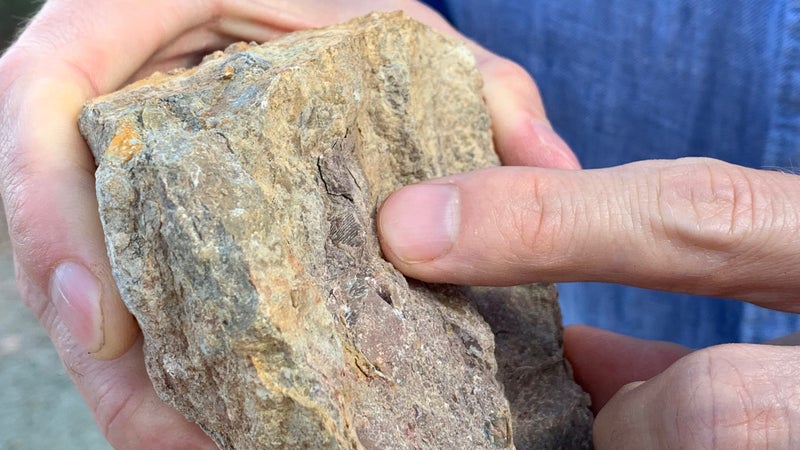
ÔÇťI found a fossil,ÔÇŁ my husband nonchalantly declared after watering the plants a couple years ago. He held up a fist-size chunk of sandy brown rock embedded╠řwith a dark, ridged oblong shape, unmistakably a plant or shell fragment. A find like this is hardly rare in New MexicoÔÇöthe state is littered with fossils, and our Santa Fe╠řneighborhood is built on ground studded with rock from the Paleozoic era, when life on earth exploded. After some research, I learned from the stateÔÇÖs ╠řthat exposed sedimentary rock is the best place to look. We set out one late afternoon for an hour of hunting. The sandstone bluff above the driveway yielded nothing, nor did the drainage wash behind the house, but then, by the trash can, my husband got lucky again: a chunk of rock almost as big as his head contained a fingernail-size shell. You never know whatÔÇÖs in your backyard until you go looking for it.╠řÔÇöAleta Burchyski
Create a Fitness Test Route
Just as states were shutting down, I was taking my first tentative steps after a knee and ankle injury kept me from running for the╠řbetter part of a year. Nervous about reinjury and conscious of social distancing, I found myself jogging╠řthe same trail loop over and over again. Rather than boring╠řme, the sameness freed me from the constant worry over what was going to happen next. I could suddenly shut off my brain and pay closer attention to my bodyÔÇöhow the same hill felt one day compared to the next, or how a ten-degree temperature spike made my energy level nosedive. IÔÇÖve never been good at training, mostly because IÔÇÖve never had the patience for it. IÔÇÖd finish a workout and then immediately start overanalyzing whether IÔÇÖd done the intervals at exactly the right speed. Now╠řI realize I was just missing one fundamental thing: simplicity. ÔÇöAriella Gintzler╠ř
Head Out on the Perfect Microadventure Bike
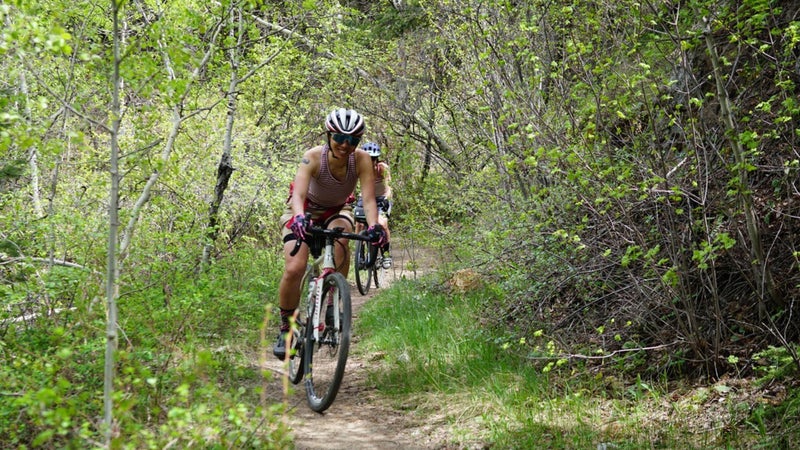
Some magic happens when you swap out your skinny road tires with 40-millimeter╠řtreaded rubber on a gravel bike. YouÔÇÖll take that scrubby trail youÔÇÖve always wondered about, the one that disappears into a new neighborhood,╠řor youÔÇÖll ride up that forested dirt road just to see where it goes. ThatÔÇÖs because 35 to 40 millimeters is, scientifically, the perfect tire width: fat enough that, on pavement, you let go of any ambitions of going fast and hammering╠řyet narrow enough to transform tame singletrack that would be too boring to ride on your mountain bike into giggle-inducing fun.
The versatility of a gravel bike invents adventures. IÔÇÖve done a midweek overnight bikepacking trip straight from the office. IÔÇÖve tried to ride 120 miles to the Jersey Shore from a small town in Pennsylvania, gotten lost, and had to bed down in a random hostel on the state line. IÔÇÖve done night rides on neighborhood trails in fresh snow and 13-degree temps, warmed only by a flask of whiskey from╠řa friendÔÇÖs back pocket.
There are Luddites who will sneer that theyÔÇÖve been riding road bikes on dirt for years and used to just call it ÔÇťcycling,ÔÇŁ╠řthat they didnÔÇÖt need a specially engineered bike to do it. DonÔÇÖt worry about them. On your gravel bike, youÔÇÖll be having too much fun to care.╠řÔÇöGloria Liu
Test Your Navigational Skills╠ř
To survive the repetitive doldrums of the same walk every day, my two kids and I invented a little game we like to call: GET LOST! (Ages: all.╠řPlayers: unlimited.╠řThings you need: shoes, but not required.)
Phase 1: Introduce this activity with your best movie trailer voice, and appoint one of the youngest players to be the expedition leader. Have them lead the team to a less familiar part of the neighborhood, and encourage blowing off well-marked trails in favor of bushwhacking. (DonÔÇÖt actually whack any bushes;╠řinstead, dodge low eye-gouging branches, run from red anthills, and scream at every stink bug sighting).
Phase 2: The fear of God pivot. (Adult, you pull the trigger on this one.)╠řStop suddenly and say something like, ÔÇťUmmm hold up a sec guys.╠řThatÔÇÖs not the way we came, is it?ÔÇŁ╠řWait for the fear to surface in your kidsÔÇÖ eyes as you look around in panic. Suggest that you may be lost, then beg them to help find the way home.
Phase 3: Get them started in the right direction by asking them to spot certain landmarks. Then enjoy as your kids enter hero mode: ÔÇťI remember that tree! ItÔÇÖs this way!ÔÇŁ They will likely surprise you with an incredible sense of direction. If not, just keep one hand in your pocket with Google Maps activated. ÔÇöHannah McCaughey╠ř
Ditch the Car
IÔÇÖd╠řbeen practicing for the pandemic and didnÔÇÖt even know it. Last fall, my wife and I welcomed our first child. Before our daughter arrived, my outdoor time consisted of half-day surf sessions, 30-mile mountain bike rides, and all-day rock climbing outings. Now that my time is more limited and weÔÇÖre staying close to home, IÔÇÖve adjusted, and in one critical way: I started adventuring from my doorstep. The clock is ticking once my hand leaves our front gate handle, so I figure the best use of my time is to make it all part of the outing.
I ride my gravel bike on connector roads to the open lands around my town. I run through the dog park behind our house╠řto another open space╠řand then to the trails beyond it. I sometimes use an e-bike to get to the base of the mountains and then run up one of them. The whole time IÔÇÖm out is an adventure, because IÔÇÖm not getting in the car. Part of it is living in a place like New Mexico, where this is relatively easy, but IÔÇÖm convinced that adventure can be had for anyone with a little creativity and a few steps out the doorÔÇöand it doesnÔÇÖt have to mean sacrificing time with your family. ÔÇöWill Taylor
Learn to Be a Naturalist
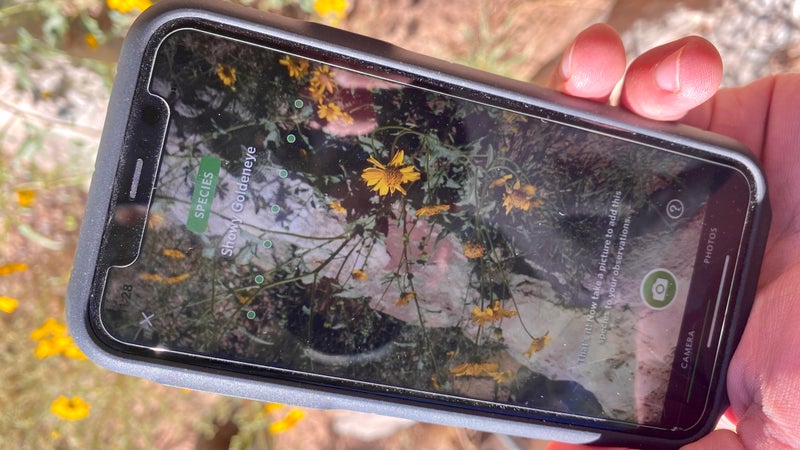
ÔÇťWhat are those yellow flowers?ÔÇŁ I asked my roommate on a recent walk. ÔÇťThose,ÔÇŁ she said, ÔÇťare dandelions.ÔÇŁ I never realized that the plants turn╠řgolden-petaled after shedding their furry form. It was the latest example of my complete ineptitude at╠řterrestrial ecology.
If we had been underwater, it would have been a different story. As a╠řdivemaster and self-proclaimed fish nerd, I can identify at least the genus of almost anything in a saltwater aquarium. So, to make my daily three-mile walk more interesting, I started to reimagine the world around me as a reef╠řteeming with alien life. Luckily, on land, I have╠řthe advantage of these things called ÔÇťappsÔÇŁ that allow╠řme to identify nature╠řin real time. In the morning, I use╠řthe free╠ř to determine the individual voices in the chorus of birdsong. On lunchtime walks, I snap╠řphotos of flora with the also-free╠ř and try╠řto find a match in its╠řdatabase of more than 300,000 species. As I go╠řalong, I pick a few to identify each day; by the next walk, I can usually name them on sight.
Like all great naturalists before me, IÔÇÖve faced trials in my pursuit of knowledge. A neighbor╠řchased me off while I was trying to photograph one of his trees. On my most recent foray, I was stung by a bee while attempting to upload a picture of a reddish tree that I think is a Mexican shrubby spurge. But╠řall those trials were worth it to transform the static world around me into one of constant exploration. ÔÇöKaelyn Lynch
Create a Hometown Travel Guide
When I moved to Santa Fe from New York a year ago╠řand those ÔÇťweÔÇÖll definitely visitÔÇŁ send-offs turned into a few booked flights, I was excited to play host. When friends and family visited me in New York, they already had most of their agenda mapped out, but in Santa Fe, which for many still feels unfamiliar, I could have free rein on their experience. So╠řwhen we went into lockdown and those trips were postponed, I decided to use the╠řtime to create╠řmy perfect visitorÔÇÖs itinerary to have ready for the future. I asked colleagues, friends, and neighbors for their ideas; combed local blogs and forums for insider spots; and sought out less-crowded alternatives to popular locations. From there, I arranged each stop by a set of criteria based on the preferences of my potential visitors, such as price point, ideal time of day to visit, duration, and difficulty level. What I actually ended up with was a hometown bucket list for myself.╠řÔÇöErin Riley
Get Dirty╠ř
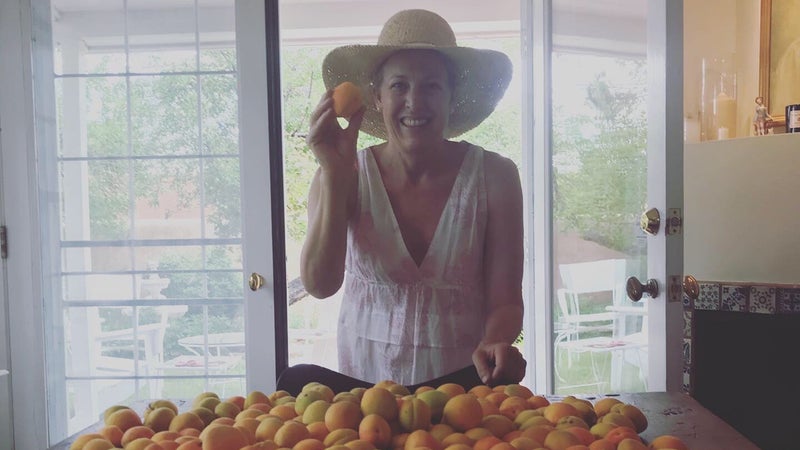
ThereÔÇÖs a reason plant and seed sales surged during lockdown. ThereÔÇÖs hope in gardening, watching seedlings rise out of the ground to provide food and beauty, and knowing that theyÔÇÖve been doing so for thousands of years. Gardening also brings year-round pleasure. Fall is the perfect time to plant perennials and hardy winter greens╠řand to harvest the last of the vegetables. I used to think of gardening as a choreÔÇöthe weeding, the grass-mowing, the pruning. I remember trying to hide when my father (who, at 83,╠řstill grows enough vegetables each year to feed an army)╠řwould yell on hot, sticky summer days: ÔÇťItÔÇÖs time to weed the garden!ÔÇŁ But while at home during COVID-19, I developed a new relationship with my own garden and the benefits of working in it. After a couple hours of lugging around bags of soil and trimming hedges, I consider it my workout for the day. It uses every muscle in my body. The growth in the garden also keeps me present. This spring, I observed the vines and shrubs come back to life and lost hours watching bees pollinate and birds care for their young.
You donÔÇÖt need a large amount of land, either. A few pots on a windowsill will bring the joy. Recently, a colleague and I have been experimenting with a hydroponic gardening farm stand╠řthat works both outside and indoors called , and itÔÇÖs thriving with herbs, lettuces, and vegetables.
Now that itÔÇÖs fall, apples and pears are dropping from the trees in my backyard, and IÔÇÖm thinking about which bulbs to plant. I love digging into the earth and seeing all the action going on undergroundÔÇöIÔÇÖm particularly thrilled when I find earthworms, a sign of healthy soilÔÇöand studies show that microbes in dirt help relieve depression. IÔÇÖve been seeking out videos on how to get raspberries to fruit and how to properly prune roses, which is far more entertaining than Netflix. ThereÔÇÖs more to learn than I can in one lifetime. And therein lies a gardenÔÇÖs real beauty: it will carry on long after IÔÇÖm gone. Time to get dirty.╠řÔÇöMary Turner
Seek Out Water
Since entering lockdown, IÔÇÖve found myself returning to the same creek near my home over and over again. I soon found a body of research called ╠řscience, which delves into the potential health benefits of aquatic environments.
The idea resonated with me on an intuitive level. In New York City, where I grew up, long walks often ended along the Hudson or East River. Later on, when I lived in Vermont, weÔÇÖd catch sunsets over Lake Champlain or hike to hidden swimming holes. In Seattle, IÔÇÖd ride ferries to Puget Sound islands on weekends. In Kansas City, my refuge was a running path along the Missouri River. Wherever IÔÇÖve lived, even the most casual journey to the water helped me reset and recharge.
The creek near my home is modest compared to some of the waterways IÔÇÖve loved in the past. ItÔÇÖs barely eight feet across in lots of places. But for now, itÔÇÖs become my happy place. ÔÇöXian Chiang-Waren╠ř
See Through New Eyes
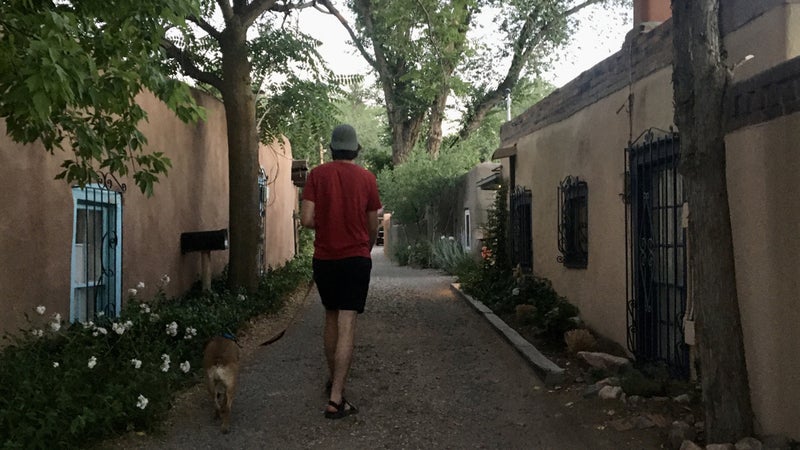
In mid-March, my girlfriend and I got a dog from a local shelter. During one of our first walks, we came across an alley that weÔÇÖd never noticed before. As we moseyed down what we thought was a dead end, a neighbor told us we could continue through the gate at the end of the street╠řand follow a short path to enter a neighborhood on the other side. We soon found more gates connecting old burro paths dating back to the 18th century, lined with gorgeous old homes.
On every walk since, my attention has been completely absorbed by my surroundings, and having the dog with me has meant that I can linger. I soon started reading about the history of the area and can now cite facts dating back to the turn of the century. ItÔÇÖs given me the same sense of hyperawareness IÔÇÖve experienced during my travels. Getting a dog hasnÔÇÖt only helped us with quarantine-fatigueÔÇöitÔÇÖs also given us an excuse to find new meaning in our immediate surroundings. ÔÇöLuke Whelan
Capture Golden Hour
If you have recently gone outside around 6 P.M., youÔÇÖll likely have noticed that the golden hour makes the world feel a bit different. As a photographer, IÔÇÖve found that in those late-afternoon hours, my neighborhood becomes a gold mine of shooting opportunities.
To take advantage of that low sun, start by studying the way certain scenes look in the low sun. For landscape shots, set your camera on screen mode so you arenÔÇÖt blinded by the viewfinder, and shoot directly into the sun and around its circumference. This will create light streaks or solar flares that can add a fun touch. Try placing some plastic wrap or a prism over the lens to test out different effects in refracting the light. ItÔÇÖs also a great time to shoot portraits:╠řjust ask your subject to close their eyes while you set up the shot╠řand have them look at the camera on the count of three so you donÔÇÖt catch them squinting. If youÔÇÖre photographing inanimate objects, late-summer foliage often looks translucent at the right angle and can be a great way to add dimension to an image. ÔÇöKyra Kennedy╠ř


